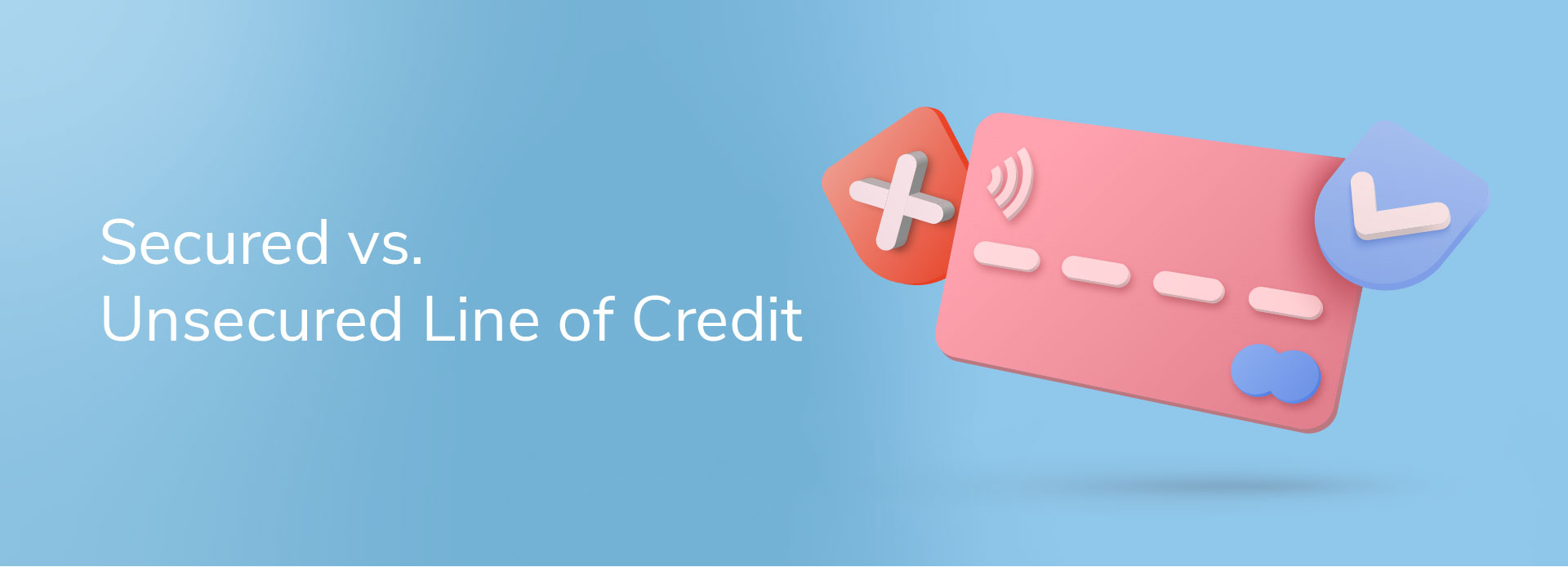
Secured vs Unsecured Line of Credit – A Comprehensive Guide
08 May 2024 | By INDIE
Loans can finance an expensive purchase, and applying for them is easy. However, you must determine whether you want a secured or unsecured loan before signing up for one. These two are distinguishable by one factor: the requirement of collateral. Here is what you need to know about an unsecured and a secured credit line.
Secured Loans:
Secured loans are named so because they require collateral, an asset. It may serve as a substitute in case you default on the loan. Banks typically ask for collateral for large loan amounts because the chances of defaults are usually high.
Advantages of Secured Loans:
1. Lower interest rates:
Unlike unsecured loans, a secured credit line generally has a lower interest rate. The collateral offers a certain level of security to the bank, which reduces the risk of repayment default. This reduction of risk means you can pay a lower interest rate.
2. Higher borrowing limit:
This feature is helpful for businesses as they can access substantial funds easily. Banks and lenders might be willing to offer higher loan amounts because collateral is involved.
3. High probability of loan approval:
You can access a secured loan even if your credit history is limited or your credit score is low. The presence of collateral reduces the risk, a reason why banks may overlook low credit scores.
Disadvantages of Secured Loans:
1. Collateral Loss:
The failure to repay your loan can result in the bank taking over and selling your assets to cover the overdue debt.
2. Documentation Process:
The application for a secured loan might involve a lot of documentation process. This overlong documentation process might be for evaluating aspects like the ownership, value, and condition of the asset pledged as collateral.
3. Rejection Without Collateral:
Secured loans are not suitable for everyone. If you don’t own an asset for collateral, the bank will reject your loan application.
Also Read: Unveiling the World of Instant Credit Lines: Your Comprehensive Guide to Informed Decisions
Unsecured loans:
An unsecured loan doesn’t need collateral. These loans serve people who don’t possess any assets or don’t want to pledge them. Consider applying for an unsecured credit line if you need cash immediately.
Advantages of Unsecured Loans:
1. Simple Application Process:
As these loans don’t require collateral, you don’t have to go through a slow evaluation process. You just have to submit your documents and await the bank’s approval.
2. Accessing Funds Quickly:
Because of the faster loan application process, you can access the required loan amount whenever needed. The entire process is over almost within an hour.
3. No Collateral Required:
There is no risk of losing valuable assets like your home if you default on loan repayment. This is the attractive aspect of unsecured loans.
Disadvantages of Unsecured Loans:
1. Strict Eligibility Requirement:
The criteria for approving unsecured loans are stricter as they don’t require collateral. An established business history, a higher credit score, and a stable income are some of the requirements for approval.
2. Lower Borrowing Limit:
Banks offer lower credit limits for unsecured loans because collateral isn’t involved. Furthermore, failure to repay an unsecured loan will result in a poor credit score.
3. Interest Rates are High:
Banks and money lenders charge higher interest rates to balance out the risk of default. Therefore, unsecured credit lines generally have higher interest rates, unlike the secured ones.
Following are the key differences between these two types:
Features |
Secured Loans |
Unsecured Loans |
Collateral Requirement |
Required |
Not required |
Interest Rates Charged |
Lower |
Higher |
Borrowing Limits |
Higher |
Lower |
Car loans, home loans, and business loans |
Education Loans, personal loans, and credit cards |
In the end, there is no clear winner in the secured vs unsecured line of credit. The choice between these two depends on your requirements and eligibility. Go for the secured option if you clear the eligibility criteria, and opt for the unsecured one if you don’t.
Disclaimer: The information provided in this article is generic and for informational purposes only. It is not a substitute for specific advice in your circumstances. Hence, you are advised to consult your financial advisor before making any financial decision. IndusInd Bank Limited (IBL) does not influence the views of the author in any way. IBL and the author shall not be responsible for any direct/indirect loss or liability incurred by the reader for making any financial decisions based on the contents and information.




